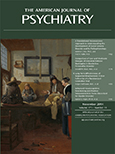Smoking Cessation in Men and Women
In this issue, Rose and Behm (1) provide important new insight into pharmacological interventions for smoking cessation targeting individuals who are unlikely to respond to nicotine replacement therapy. Their findings demonstrate the efficacy of combined varenicline and sustained-release bupropion as a treatment for this population. However, the beneficial effect of the combined treatment was limited to male smokers. Given that women have poorer smoking cessation outcomes than men, studies such as this one provide important data to guide further investigations into the neurobiological mechanisms underlying sex differences in smoking cessation treatments.
Rose, Behm, and their research group previously developed an “adaptive treatment” approach to smoking cessation in which smokers are supplied with transdermal nicotine during a 2-week “prequit” period and their ad lib smoking is measured. Previous studies demonstrated that smokers who reduce their daily cigarette consumption by more than 50% during this period are more likely to quit successfully with nicotine replacement than those who do not reduce their smoking by more than 50% (2, 3). Thus, it is possible to identify smokers who are unlikely to benefit from nicotine replacement therapy and provide alternative or augmented treatments, which can prevent up to 10% of treatment failures (2).
The study reported in this issue used the adaptive treatment strategy and enrolled 222 smokers who did not show a reduction of more than 50% in ad lib smoking during a nicotine replacement-supported prequit period. Participants were randomly assigned to receive 12 weeks of treatment with varenicline alone or varenicline plus sustained-release bupropion. The primary outcome variable was continuous abstinence during weeks 8–11. Combination treatment significantly improved outcomes, with 39.8% meeting the continuous abstinence criterion, compared with 25.9% in the varenicline-only group. Of particular interest was the finding that the benefit of combined therapy was observed only in male smokers. Overall, male smokers who received the combination treatment had a 50.0% abstinence rate, compared with 19.6% of those who received varenicline alone. Among female smokers, there was no significant difference in abstinence rates between treatment arms (29.3% for combination therapy and 30.6% for varenicline alone).
This finding is intriguing in light of existing data showing that, across treatment modalities, there are sex differences in smoking cessation outcomes, with female smokers doing poorer than males (4–6). For example, meta-analyses and pooled analyses have reported lower quit rates for female smokers than for male smokers in trials of nicotine replacement therapy both with and without counseling (4). Of note, while there are absolute differences in cessation rates between the sexes, there is also evidence that male smokers benefit from nicotine replacement therapy to a greater degree than female smokers (4). The study reported here adds to this literature, demonstrating that varenicline and the combination of varenicline and bupropion are unlikely to be effective treatments for female smokers who do not initially respond to nicotine replacement therapy. The initial trials of varenicline, bupropion, and varenicline plus bupropion did not report any differences between male and female smokers, although these studies were not designed to detect sex differences (5, 7–9).
Despite the recognition that there are important sex differences in smoking behavior and smoking cessation, our understanding of the neurobiological mechanisms that underlie these differences is very limited. There is evidence that female smokers exhibit less nicotinic receptor up-regulation in the striatum than male smokers (10, 11). More recently, it has been found that female smokers have reduced gray matter volume in brain areas that are not reduced in male smokers (12). Specifically, female smokers, compared with nonsmoking female comparison subjects, had reduced gray matter volume in the thalamus, left cerebellum, left ventrolateral prefrontal cortex, and medial orbitofrontal cortex. This was in contrast to male smokers, who showed reduced volumes in the thalamus and the left and right cerebellum compared with nonsmoking male comparison subjects, but no differences in the prefrontal cortex. Additionally, male smokers had significantly greater volumes in the parahippocampus bilaterally compared with male nonsmokers. These early findings will need replication, but they suggest that females may have smoking-related alterations in brain circuits related to addiction and behavioral control that differ from males. These sex-specific neural changes may help explain both the reduced efficacy of nicotine replacement therapy and the lower overall quit rates for female smokers.
1 : Combination treatment with varenicline and bupropion in an adaptive smoking cessation paradigm. Am J Psychiatry 2014; 171:1199–1205Link, Google Scholar
2 : Adapting smoking cessation treatment according to initial response to precessation nicotine patch. Am J Psychiatry 2013; 170:860–867Link, Google Scholar
3 : Personalized smoking cessation: interactions between nicotine dose, dependence, and quit-success genotype score. Mol Med 2010; 16:247–253Crossref, Medline, Google Scholar
4 : Sex differences in long-term smoking cessation rates due to nicotine patch. Nicotine Tob Res 2008; 10:1245–1250Crossref, Medline, Google Scholar
5 : Are there gender differences in smoking cessation, with and without bupropion? Pooled- and meta-analyses of clinical trials of bupropion SR. Addiction 2004; 99:1462–1469Crossref, Medline, Google Scholar
6 : Gender-related differences in hypnosis-based treatments for smoking: a follow-up meta-analysis. Am J Clin Hypn 2008; 50:259–271Crossref, Medline, Google Scholar
7 : Varenicline and bupropion sustained-release combination therapy for smoking cessation. Nicotine Tob Res 2009; 11:234–239Crossref, Medline, Google Scholar
8 ;
9 : Bupropion SR as an aid to smoking cessation in smokers treated previously with bupropion: a randomized placebo-controlled study. Clin Pharmacol Ther 2001; 69:438–444Crossref, Medline, Google Scholar
10 : Sex differences in availability of β2*-nicotinic acetylcholine receptors in recently abstinent tobacco smokers. Arch Gen Psychiatry 2012; 69:418–427Crossref, Medline, Google Scholar
11 : beta2-Nicotinic acetylcholine receptor availability during acute and prolonged abstinence from tobacco smoking. Arch Gen Psychiatry 2009; 66:666–676Crossref, Medline, Google Scholar
12 : The effects of chronic cigarette smoking on gray matter volume: influence of sex. PLoS One 2014; 9:e104102Crossref, Medline, Google Scholar



